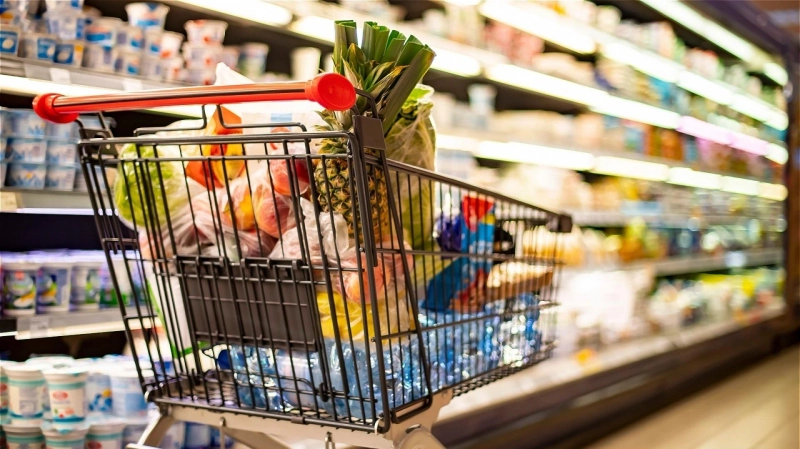Building a grocery store is a complex endeavor that requires careful planning, design, and execution to meet customer needs and comply with industry standards. Whether you are constructing a new store or renovating an existing one, following these tips can help ensure a successful project.
Location, Location, Location
Market Research: Before construction begins, conduct thorough market research to understand the local demographics, competition, and shopping patterns. Choose a location that is easily accessible and visible to your target market.Zoning Laws: Ensure the chosen site complies with local zoning laws and regulations. This may include restrictions on building size, parking requirements, and permitted uses of the property.Design with Customer Experience in Mind
Store Layout: Plan a layout that enhances the shopping experience. Consider a logical flow from entrance to checkout, with popular items placed strategically to guide customers through the store.Aisle Width and Accessibility: Ensure aisles are wide enough to accommodate customers with carts, wheelchairs, or strollers. Compliance with the Americans with Disabilities Act (ADA) is crucial.Lighting and Signage: Good lighting improves visibility and ambiance, while clear signage helps customers navigate the store. Energy-efficient lighting can also reduce operational costs.Incorporate Sustainable Practices
Energy Efficiency: Design the store with energy efficiency in mind. Use energy-efficient HVAC systems, LED lighting, and refrigeration units. Consider installing solar panels to reduce long-term energy costs.Waste Management: Plan for effective waste management, including recycling stations, composting, and waste reduction strategies. This not only benefits the environment but can also appeal to eco-conscious consumers.Sustainable Materials: Use environmentally friendly materials for construction, such as recycled steel or sustainable wood. These materials can enhance your store’s green credentials.Plan for Technology Integration
Point of Sale (POS) Systems: Ensure your store design accommodates modern POS systems, including space for self-checkout stations. These systems can streamline the checkout process and improve customer satisfaction.Digital Signage and Displays: Plan for the integration of digital signage and displays throughout the store. These can be used for promotions, customer information, or even dynamic pricing.Security Systems: Incorporate advanced security systems into the design, including surveillance cameras, anti-theft measures, and secure entry points for staff.Consider Back-of-House Efficiency
Storage and Stockrooms: Design efficient stockrooms with easy access to the sales floor. Adequate storage is essential for managing inventory and reducing restocking times.Loading Docks: Plan for loading docks that accommodate delivery trucks and facilitate quick, safe unloading of goods. Separate these areas from customer entrances to minimize disruptions.Employee Areas: Provide comfortable and functional areas for staff, including break rooms, offices, and restrooms. Happy employees are more productive, which can translate to better customer service.Safety and Compliance
Building Codes and Permits: Ensure your construction plans comply with all local building codes and obtain the necessary permits before starting construction. Non-compliance can lead to costly delays or fines.Fire Safety: Install fire safety systems, including sprinklers, alarms, and extinguishers, as required by law. Regularly inspect and maintain these systems to ensure they are operational.Health and Safety Standards: Adhere to health and safety standards, particularly in areas like food storage and preparation. This includes proper ventilation, temperature control, and sanitation facilities.Budgeting and Cost Management
Accurate Cost Estimation: Develop a detailed budget that includes all construction costs, from materials to labor. Factor in contingencies for unexpected expenses.Cost Control: Monitor expenses closely throughout the construction process. Regularly compare actual costs to the budget and make adjustments as necessary to stay on track.Plan for Future Growth
Scalability: Design the store with future expansion in mind. This could include leaving space for additional aisles, departments, or even a second story if needed.Technology Upgrades: As technology evolves, ensure your store can accommodate future upgrades without significant disruption. This could involve installing extra wiring or planning for modular system components.Community and Customer Engagement
Community Involvement: Engage with the local community throughout the construction process. This could include public consultations, updates on progress, or even a grand opening event.Customer Feedback: Consider gathering customer input during the planning stages. This can provide valuable insights into what local shoppers want and expect from a grocery store.Work with Experienced Professionals
Architects and Engineers: Hire architects and engineers with experience in grocery store construction. Their expertise can help ensure the project is completed efficiently and meets all technical requirements.General Contractors: Choose a reputable general contractor who understands the complexities of grocery store construction. Good project management is key to completing the store on time and within budget.Consultants: Consider hiring consultants for specialized areas like refrigeration, lighting, or sustainability. Their knowledge can help optimize these critical aspects of the store.Conclusion
Constructing a grocery store is a significant investment that requires careful planning and execution. By considering factors like location, design, sustainability, technology integration, and customer experience, you can build a store that not only meets current demands but is also poised for future growth. Working with experienced professionals and staying engaged with the community will further enhance the success of your project.


